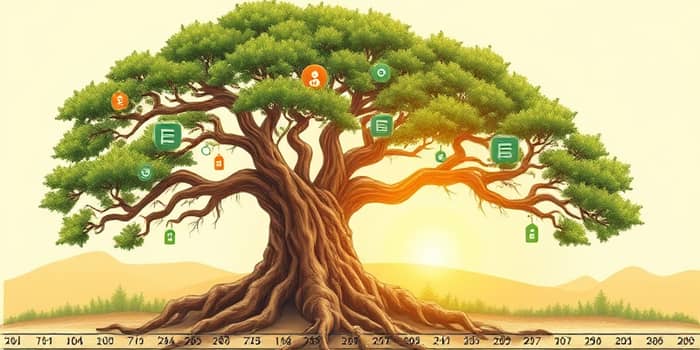
Investors today are inundated with flashy headlines and one-year performance charts that can tempt even the most disciplined savers. Yet true wealth accumulation and reliable income streams are built on a foundation of consistent returns over multiple market cycles. Choosing funds with proven resistance to market swings not only helps smooth the ride during downturns but also compounds gains more predictably over decades.
By focusing on stability and resilience, rather than chasing fleeting hot streaks, you position your portfolio for sustainable success. This guide will explore the definition and importance of long-term performance stability, review fund types, interpret current trends, explain key assessment metrics, and offer practical steps to integrate these insights into your own investment process.
Long-term performance stability refers to a fund’s ability to deliver consistent returns year after year, smoothing out short-term volatility and market shocks. It is not about generating the single highest return in a given year, but about maintaining a reliable growth trajectory across multiple economic cycles. Investors seeking to fund retirement, education, or legacy goals benefit from low risk-adjusted volatility over a decade, minimizing the emotional strain and potential losses associated with sharp drawdowns.
Common pitfalls include chasing funds after they have just outperformed peers in the previous 12 months, or switching strategies based on the latest market narrative. Such behavior often leads to buying high, selling low, and missing out on the compounding effect of reinvested gains. By contrast, funds with a record of steady performance offer peace of mind and a higher probability of meeting long-term objectives.
The U.S. mutual fund industry held $27.97 trillion in assets as of April 2025, with equity funds representing $14.37 trillion and bond funds $5.12 trillion. While active mutual funds have experienced cumulative outflows of $1.8 trillion over the past two years, index funds and ETFs continue to draw investor capital, albeit at moderating rates. Globally, equity fund assets reached $35.7 trillion by the end of 2024, up 12% year-over-year, and money market funds saw $1.5 trillion in inflows worldwide.
Evaluating a fund’s past performance requires more than a glance at the most recent annual return. Dive into risk-adjusted measures and tenure details to get a fuller picture. Seek funds demonstrating rolling five-year and ten-year returns that outperform peers without extreme peaks and troughs. A low standard deviation combined with a high Sharpe or Sortino ratio signals strong risk-adjusted performance consistency.
According to Schwab’s 2025 Long-Term Capital Market Expectations, fixed income assets may benefit from elevated interest rates, offering attractive yields relative to recent decades. Equities could see a narrowing performance gap over risk-free instruments, underscoring the need for diversified exposure across global markets. A balanced approach that blends growth potential with income generation remains prudent for investors seeking both stability and a reasonable upside.
At the heart of successful long-term investing lies patience and discipline. Rather than chasing the hottest fund of the moment, focus on those with demonstrable stability over 5, 10, or even 15 years. By prioritizing fundamental resilience and consistent return profiles, you reduce emotional decision-making and allow compounding to work in your favor.
“Chasing past performance may be a natural instinct, but it often isn't the right one when placing bets on your financial future. A good rule of thumb is to look for consistency of returns on a longer time horizon.” Keeping this principle at the forefront can guide you toward funds that stand the test of time and economic cycles.
References













